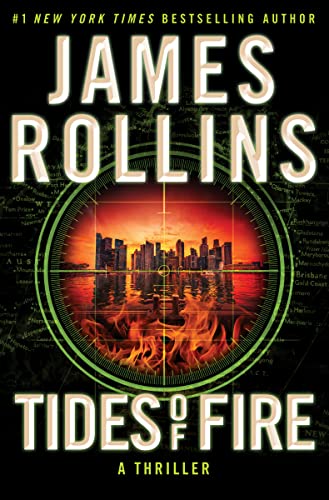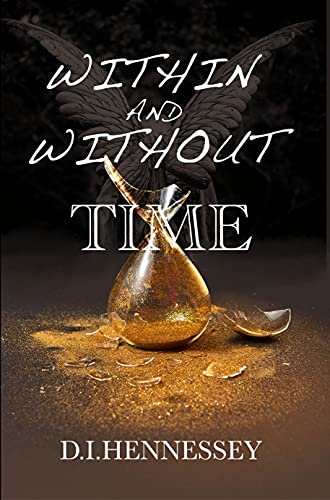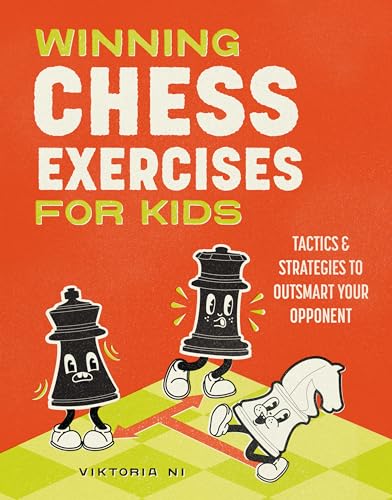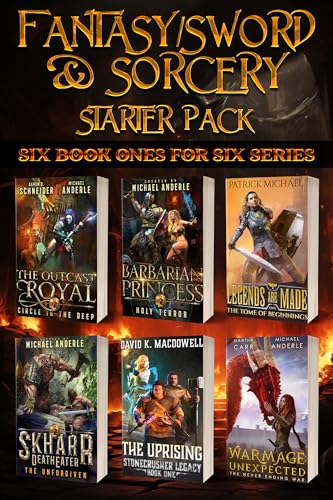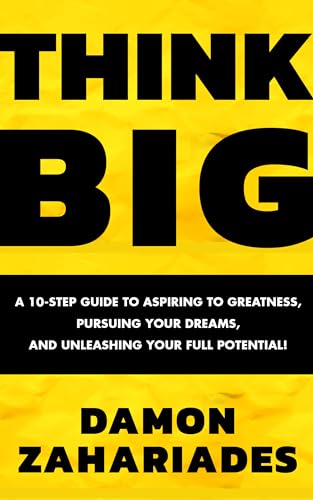kindle
New blog post about Kindle bestsellers and negotiations with dinosaurs….
Stephen Windwalker has filed his weekly Kindle column at Teleread.com, “Kindle store bestsellers: From free to DRM-free?” @ http://tinyurl.com/WWTeleread227
Just released in the Kindle Store: The Complete User’s Guide To the Amazing Amazon Kindle 2

(The Complete User’s Guide To the Amazing Amazon Kindle 2: A Kindle Owner’s Toolkit Of Over 500 Tips, Tricks, and Links To Help You Get the Most Out of Amazon’s Revolutionary e-Book Reader & Free Wireless Web Browser has been live in Amazon’s Kindle Store since Sunday afternoon and has already cracked the top 25 bestsellers there, although the book’s bibliographic metadata, product description, and sort categories are not yet live on the Amazon site. So, just to make it a little easier for you to get a sense of what the book provides while it is still being offered at a very low promotional price, I am posting the content of the Amazon product description here).
Here’s the beta version of the definitive new guide to the vastly improved Kindle 2, by the author of the 2008 Kindle 1 guide that outsold all other first-generation Kindle guides combined. Find out why the Kindle is still king among e-book readers with an astonishing array of new hardware and software features that make it a delightful snap to read anything from bestsellers to classics to your daily papers or a memo from a colleague. And with a treasure trove of more than 500 tips, tricks, resources and links Windwalker’s Kindle 2 guide will make you wonder if Amazon has evolved the e-reader that does not need a computer (Kindle 1) into the e-reader that *is* a remarkably versatile mobile computer (Kindle 2) with totally free “anywhere” wireless service paid for by Amazon.
In addition to scores of hacks and resources to help you make the most of the Kindle 2 reading experience and easily acquire fully-formatted free content for your Kindle, Windwalker also goes far beyond the user’s manual w tells you what you need to know, with updated links, so that you can use the Kindle 2’s surprisingly powerful and user-friendly free wireless web to check email, news, scores, stocks, bank accounts, favorite blogs, movie listings, book reviews, shopping choices, travel information, and even the local weather!
Written for serious readers as well as early adopters and “gadget heads,” Windwalker’s book-length guide — 40,000 words in this inexpensive beta edition — comes elegantly formatted for the Kindle with a fully interactive table of contents that make for user-friendly navigation and hundreds of links through which you can access resources directly with your Kindle browser or, if you take advantage of Windwalker’s free offer, download to your desktop or notebook computer. If you own the first-generation Kindle and you are trying to decide whether to upgrade to the Kindle 2, this book will help you with the due diligence necessary to make an informed decision, and even provides helpful information on how to help harvest some of the funds for an upgrade from the process of disposing of your Kindle 1.
Great Websites for Free Content – What’s New with the Kindle 2 – Up and Running: Getting Started with Your Amazon Kindle 2 – Getting and Reading Books With Your Kindle – Sampling Books – Saving Items for Later – Getting and Reading Periodicals and Blogs with Your Kindle – Using Google Reader to Read Your Favorite Blogs on the Kindle – Using the Kindle’s Audio Features – Connecting with the World With Your Kindle – Read and Answer Email Anywhere*, Anytime on the Kindle, Without Monthly Charges – Troubleshooting if You Have Difficulty Accessing Gmail or Other Web Pages – Traveling with Your Kindle – Using the Kindle to Translate Foreign or Technical Words and Phrases – Making the Most of Your Kindle Connections Overseas – Using the Kindle as a Travel Guide – The Kindle and GPS – Checking Sprint Wireless Coverage for the Kindle 2 – Downloading Kindle Editions via USB Cable – Other Tips and Tricks to Help You Get the Most out of Your Kindle 2 – Optimizing the Powers of Kindle Search – Returning a Kindle Store Purchase – Using Gift Cards, Gift Certificates, and Promotional Certificates to Give or Purchase Kindle Content – Recover Deleted Content at No Charge – Sign Up for an HTML File of the Links Contained in This Book – Writing and Publishing Kindle Content: 20 Steps to Publishing a Kindle Edition of Your Book or Document – How to Use Kindle, Amazon and the Web to Market Your Book and Connect with Readers – Improved Content Management and Sorting – Opening, Deleting, and Restoring Kindle Content – Let Your Kindle Read to You with a New “Read-to-Me” Feature – Hands-Free Reading Options – Improved Periodical Navigation – Improved Reading and Web Navigation with the Joystick and the Back Button – and much, much more!
Kindle Nation – Volume 1, Number 1
Good morning Kindlers!
So much has been going in the world of the Amazon Kindle that I have decided to begin trying to condense news and developments that I want to share with you in a weekly “Kindle Nation” email newsletter. You will receive this if you have signed up in the past for my updates or links, or if you have sent me a “subscribe to Kindle Nation” email, but you can opt out easily just by sending an email with “unsubscribe” in the subject line to KindleNation@gmail.com. I can promise that the weekly newsletter will be brief (never more than 1,000 words), simple in format, and aimed at helping Kindle owners to get more out of their Kindles, solve irksome little problems, and keep up to date with new Kindle developments and fresh Kindle content.
I’m going to try to focus on 5 or 6 nuggets a week, and here’s the lineup for Kindle Nation – Volume 1, Number 1:
1. Thousands of free books now in the Kindle Store, and an easy way to organize your search
2. Kindle Gift Cards
3. Countdown to the Kindle 2.0: 7 Days
4. Newly Streamlined Kindle Home Page
5. Here’s a Fun and Timely Read
So, without further ado:
1. Thousands of free books now in the Kindle Store, and an easy way to organize your search
Last week Amazon added over 7,000 free books to the Kindle Store. Although they are public domain titles previously available through Project Gutenberg and elsewhere, this is an important step and a sign of things to come as Amazon makes content deals along the way toward Jeff Bezos’ stated long-term goal of giving Kindle owners access to “every book ever printed.” The downside for some Kindle owners is that, temporarily, this made it harder to find Kindle titles that are being offered free due to a zero-price promotion. Not to worry. With a tip of the cap to Karen in the Kindle Korner community, I am happy to be able to provide this link that places the most popular zero-price titles first in a Kindle Store search: Just click on Search Free Promotional Content in the Kindle Store or paste http://tinyurl.com/
2. Kindle Gift Cards
There’s nothing revolutionary here, but it is a nice convenience. Here’s the scoop: Something New for Kindle Purchases: The Amazon Kindle Gift Card!
3. Countdown to the Kindle 2.0: 7 Days
By now you have heard from me and elsewhere about the Kindle 2.0. To recap, here’s the story on Amazon’s planned February 9 press conference, hosted by Jeff Bezos, at New York’s Morgan Library. And here’s my experience with Amazon Customer Service, which makes me very confident that Amazon will soon begin offering the Kindle 2.0 to customers who are waiting in line with existing Kindle backorders.
If you have read my Kindle Guide, you know that I’ve already had a lot to say about what I think should be, and will be, the features of the Kindle 2.0. So I am not going to burden the record with more of the same, except to say that it is critical that Amazon provide as many as possible of these features to existing Kindle owners with a firmware update via the Whispernet. And please believe me when I say that, while I understand the interest of many of us, myself included, in upgrading to the new Kindle, I am not recommending or suggesting to anyone that they throw their first Kindles to the curb and buy something new.
But if you do want to place a Kindle order so that you will fix your place in line for the Kindle 2.0, here’s a link to place your order.
4. Newly Streamlined Kindle Home Page
If you haven’t checked out my Kindle Home Page website lately, a natural consequence of the work I am doing to prepare the next Kindle guide is that the website has been streamlined and spruced up a bit for your covenience.
5. Here’s a Fun and Timely Read
Whether you are a boomer who knows all the words to “Peggy Sue” or tweener who would like to learn about the lives of the musicians who came (long) before Green Day or the Jonas Brothers, you may be interested in a new Kindle exclusive from author Staton Rabin: OH BOY! The Life and Music of Rock ‘n’ Roll Pioneer Buddy Holly. According to my friend Len Edgerly over at the Kindle Chronicles podcast, it reads well for those from 9 to, well, somewhat older.
Okay, that’s a wrap. Please feel free to share this with your friends and fellow Kindlers, and encourage them to subscribe by sending an email with “subscribe” in the subject line to KindleNation@gmail.com. If you are already receiving it, you don’t need to subscribe unless you want to give me an address change.
Cheers!
Stephen Windwalker
http://tinyurl.com/KGuide
Kindle Home Page website
Facebook: http://tinyurl.com/
Amazon Author Page: http://tinyurl.com/Windwalker-
617-418-3161
Here’s a terrific idea for more efficient use of the Kindle’s wireless web….
A Kindle lover over at the Kindle Korner community has come up and shared an elegant solution for the problems that many of us face in trying to navigate efficiently and get the most out of the Kindle’s wireless web service. Here’s a link to her post, and here’s a link to the file she has created and made available to all.
Kudos to Adrienne! (I’m always saying that, since Adrienne is also the name of my delightful and talented younger daughter.)
Why Did Amazon Launch the Kindle, and Which is More Important, the Chicken or the Egg?
I’m having some fun today putting the finishing touches on the FAQ appendix for the book, and in the process I’ve finally gotten around to transcribing this remarkable brief exchange between Chris Anderson and Jeff Bezos at the 2008 Book Expo America. You can check my transcription and listen to the entire podcast here, but in my view it is this exchange which states most clearly that the primary importance of the Kindle for Amazon lies in four things: (1) it jumpstarts significant electronic book sales; (2) it positions the books in the Kindle store as the primary source of e-reader content; (3) it sets the bar higher than it had previously been set for form factor, feature set, and delivery mode for electronic books; and (4) it gives Amazon a seat at the head of the table in shaping this area of book commerce going forward.
Q. “In Asia, [there are] cell phone serials, cell phone comics, cell phone mangas, etc. I guess, first question, what have you learned from the mobile reading experience in Asia? Secondly, does that in itself put the Kindle in competition with the cell phone down the line as cell phones have better screens, etc.”
A. “Maybe the hardware device, yes, but not necessarily the Kindle books. The Kindle books, maybe they should be available on every device. We created Kindle because we’ve been selling e-Books for 10 years, but we needed an electron microscope to find the sales. And so, three years ago we said, ‘Look, what we need to do is create a perfect, integrated, streamlined customer experience all the way through, so we’ll build the device, we’ll build the back-end servers, we’ll digitize the content ourselves if we need to. Whatever it takes, we’re going to build a great customer experience, to get that thing started. If we can get other devices to also be able to buy Kindle books, through other devices, that’s great.’”
The Golden Age of Kindle 2.0 and Beyond — Part 3
(As I have mentioned in my previous two posts, I’ve been working on completing this new chapter of The Complete User’s Guide to the Amazing Amazon Kindle, and I have been blogging some of the content here the past few days. The chapter will focus on about a dozen possibilities for Kindle 2.0 and beyond – some may be exciting to some, and others to others. This is the third post. If you scroll down to the end of this post you will find links to the two earlier posts should you want to find them. Please feel free to weigh in with your own ideas in comment form).
A Big Tent for Kindle Content Availability on Other Devices
(and the Converse….)
One of the things that can make it fascinating to watch the way Amazon conducts business is that the company often confounds conventional expectations about its merchandising strategies. Just when it appears that Amazon is all about trying to sell one category of merchandise, they turn that appearance and its attendant assumptions on their heads with strategic moves aimed at maximizing sales in some other merchandise categories.
During the half decade following the company’s rather humble origins in 1994, Amazon built a reputation as a bookseller with great prices, great service, and very good selection. Then, beginning gradually in 1999, Amazon opened its big selling tent to thousands of other online booksellers from individuals selling out of their homes or garages to major book retailers like Powell’s and New York’s famous Strand Bookstore as well as countless other entities between these two extremes of scale. While some analysts, competitors, and potential Amazon Marketplace sellers wondered aloud (or in print) why Amazon would want to invite competitors inside its tent where they could “cannibalize” Amazon’s own sales even while they benefited from Amazon’s valuable website real estate, the fundamental underlying truth was that Amazon was showing its allegiance to its primary business principle of making money by optimizing its customers’ shopping experience in terms of selection, service, and price. Eventually it became clear to all concerned, as it was repeated again and again by Jeff Bezos and other Amazonians, that Amazon was just as happy to make money off a Marketplace seller’s sales as to make money off sales from its own warehouses. (For a much more thorough exposition of these developments and how they have come to affect the world of bookselling, see “The Bookselling Business: How We Got Here,” the second chapter of my full-length book Selling Used Books Online: The Complete Guide to Bookselling at Amazon’s Marketplace and Other Online Sites.)
I digress, but my point would be that, if we look at Amazon’s history and its “customer experience” mission, it shouldn’t surprise us to find that the company’s ultimate purpose, with the Kindle, may not be to sell Kindles. By launching the Kindle and pushing hard in the general direction of making the Kindle format the industry standard, Amazon guarantees that:
· we are turning the corner toward a world in which e-books and various other electronic formats for the printed word will become more and more prevalent;
· rather than be a print-on-paper dinosaur condemned to losing its dead-tree customers gradually to e-books and web-based reading, Amazon will be a major player, and very likely the leading player, on these evolving electronic terrains of publishing and bookselling; and
· Amazon will have a seat at the table, and tremendous influence with publishers as well as readers, in determining how various e-book publishing standards such as epub, .mobi, and .azw are positioned and which, if any, gains dominance.
To consider how this evolution will be visible in the context of future generations of Kindles or their natural offspring, it may not be too simplistic or reductive to think about two questions:
· first, when and whether Amazon will make it easy for Kindle owners to buy content for their Kindles from other sellers without having to jump through too many formatting and file-transferring hoops; and
· second, when and whether Amazon will make it easy for the owners of other e-book devices to buy Kindle edition books from Amazon for use on their Readius, iPhone, Sony e-Reader or other gadgets.
The first possibility, of course, is more than a possibility. Right from the start, it has been possible for Kindle owners to download tens of thousands of titles from free and paid websites and to use Amazon’s own file-formatting services, either free or for a dime a document, to transfer them to their Kindles. I have no doubt that Amazon pays attention to the extent to which its customers use their Kindles for these purposes, both in absolute terms and as a ratio against the number of Kindle editions that customers purchase and download directly from the Kindle store. Providing these and other ancillary benefits for Kindle owners makes the Kindle more marketable, and reduces the likelihood that customers will start reading books on some other device, so of course it makes good sense for Amazon as a business proposition. I further have no doubt that Amazon will remain alert to possibilities for ways to monetize its Kindle customers’ access to content other than Kindle editions, and might well open a revenue-sharing gateway into its Kindle Store tent for electronic files from other sellers. Of course, if an electronic file created outside of Amazon’s boundaries is sold to Kindle owners in Amazon’s Kindle store, it may be a distinction without a difference to call that file something other than a Kindle edition.
Once we imagine these possibilities, it becomes quite easy to imagine a relatively seamless world in which the owners of other e-book readers can shop in the Kindle store. I found it fascinating that during a presentation at the Spring 2008 BEA trade show, without even being asked, Jeff Bezos volunteered the possibility that Amazon might make Kindle edition books available for download to other devices. After about a decade of Bezos-watching for fun and profit, I can tell you with confidence that, despite his raucous laugh and seeming spontaneity, the Amazon CEO does not blurt things out, especially at forums such as the BEA.
So, let’s think about this. One of the Kindle’s initial missions has been to be a game-changing device that will make e-book reading an attractive choice for large and growing numbers of readers. We are not there yet, but we are getting there, and it is clear already that the Kindle is changing the game in ways that none of its predecessors could achieve. The combination of the device’s features, Amazon’s reach both with readers and with publishers, and Amazon’s relentless marketing commitment to the Kindle makes such change quite likely, if not inevitable.
Once the Kindle clears that hurdle, there will be more and more hardware competitors, but none of these hardware competitors is likely to possess Amazon’s reach or marketing power. Some of these competing devices will be every bit as cool as the Kindle, if not cooler. Others will have their own loyalists simply because they offer the convergence features that are desired by specific customers.
Why wouldn’t Amazon want to make its Kindle catalog available on these devices for the right price? If the company’s strategy runs true to form, Amazon will continue to push the Kindle but will also, eventually, be perfectly happy to be the bookseller for other electronic reading devices whose manufacturers seek entry under the big tent of the Kindle catalog.
Customer Experience: In addition to making more money for Amazon, this approach would also make more money for the publishers and authors who publish for the Kindle using either the Kindle’s .azw standard or the .mobi standard. Naturally, then, by making it easy for publishers and authors to access other electronic distribution channels simply by publishing for the Kindle, Amazon would be greatly enhancing the author and publisher benefit of Kindle publishing. This benefit, in turn, would help Amazon to come closer to its stated goal of making “every book ever published” available to Kindle readers, which would be pleasing to us as current Kindle owners and would also, in turn, help to expand the installed base of Kindles. What goes around comes around.
Likelihood of Adoption (on a scale of 1 to 10): 8. When Jeff speculates, I listen. Whether and when either of these developments occurs, of course, will depend on Amazon’s own notions about the effect of such changes on the Kindle brand, on Amazon’s net income, and on the company’s long-term vision of a world in which Amazon, through the Kindle and perhaps these other devices, is the company that provides readers with immediate electronic access to every book ever printed.
Shop the Amazon Store Through a Kindle Gateway
Here’s a conundrum for you. You know how easy it is to shop the Kindle Store from your Kindle? Pretty easy, right? (I suspect that most of us tend to do more of our Kindle shopping from our desktop or laptop computers, but that doesn’t mean that a significant amount of folding money doesn’t change hands in Kindle-based transactions).
So why doesn’t Amazon make it just as easy for Kindle owners to use their Kindles to shop the main Kindle store? Kindle owners are probably more likely than just about any other group of customers that Amazon can identify to be Amazon loyalists, early adopters, significant spenders, and avid readers. That, my friends, is what we would call a demographic Grand Slam. It is so obviously in Amazon’s interests to provide Kindle owners with a seamless Kindle-based gateway into all of the company’s many main-store departments that I am surprised I haven’t seen more discussion of this issue.
I got a chance to ask Jeff Bezos this question live on Tom Ashbrook’s On Point program on NPR, and he said that the reason Amazon had yet to open this gateway involved engineering obstacles. If they can’t fix this one soon, it’s time to hire some new engineers. This is money in the bank for Amazon.
Although Amazon has not wanted to release any information regarding Kindle sales, the company did offer a report, several months after the Kindle’s launch, to the effect that Kindle owners were buying more print-on-paper books than they had purchased before they had their Kindles. This seemed strange, but if it is true, then it would probably also be true that they would be likely to buy more gourmet coffee, shoes, electronics, and office supplies from Amazon too – especially if they could make some of those purchases directly on their Kindles.
Customer Experience: Frankly, this enhancement will probably be more of a win for Amazon than it will be for Kindle owners. For Amazon, it’s cash. For Kindle owners, it’s a minor convenience plus. But even though I don’t expect the Kindle to make my coffee (for a couple more years, anyway), what’s not to like about being able to order a case of gourmet coffee, a pair of shoes, or a new printer from my Kindle? For Kindle owners, we will know it is here when there’s a new line on the menu screen off the Home screen, right under “Shop in Kindle Store,” that reads “Shop in Amazon Store.”
Likelihood of Adoption (on a scale of 1 to 10): 10. Hey, if Jeff said it is only engineering, then it is only a matter of time.

